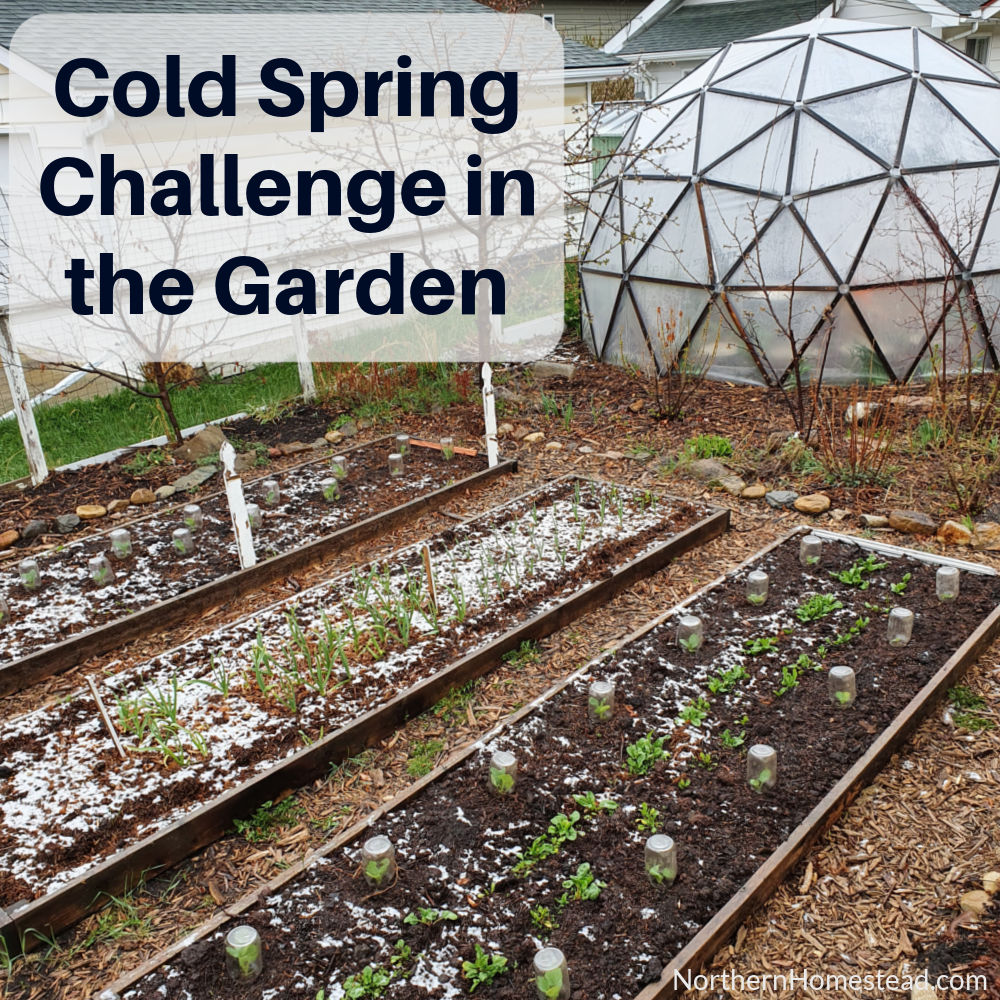
Living in a cold climate cold is a constant challenge in the garden. We share many methods about how we survive blizzards and protect plants from frost. In this blog article, we want to particularly address the cold spring challenge in the garden.
If you prefer listening to reading, you can continue to watch the video on YouTube, just follow the link.
Why embrace the cold spring challenge
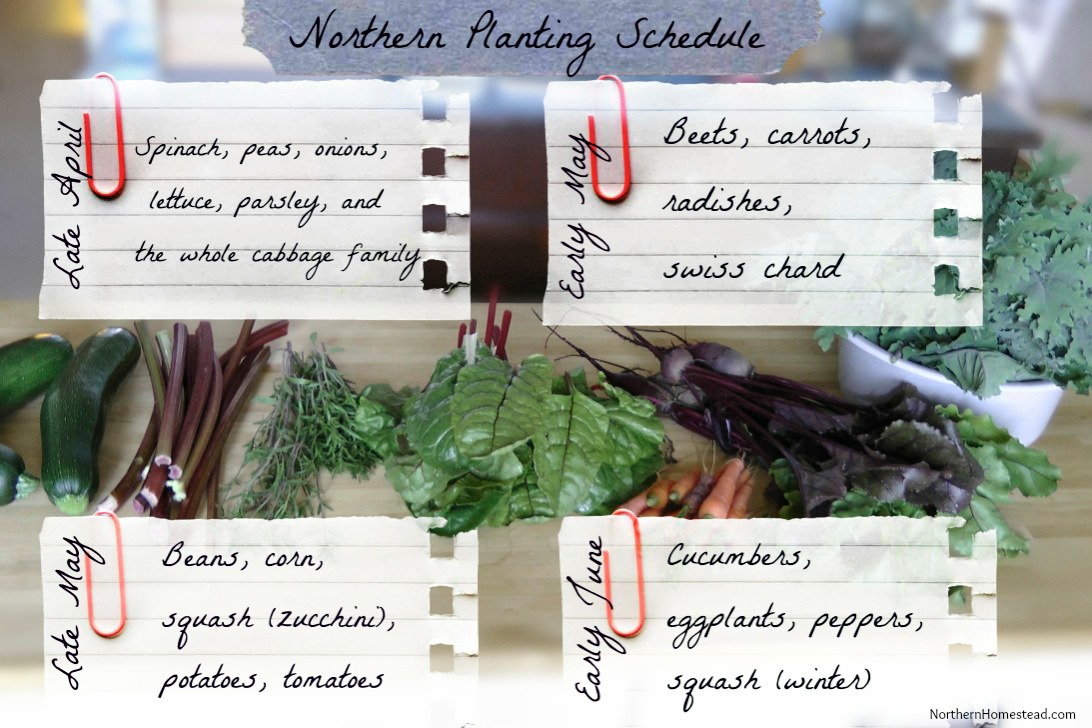
Some cold climate gardeners like to wait till all danger of frost is gone before planting anything. While it is an option, and for new gardeners may be a good one, we like to extend the growing.
As you see in our spring indoor seed starting schedule and also in the planting schedule, we like to start the growing season in the outside garden early. We want to plant as early as possible and as late as needed.
We find if we get an early start to the growing season, we prolong it and get a much better harvest. It is worth investing a bit upfront to get more at the end. Why is that?
With only about 100 frost-free days we want to extend the growing season as much as we can. It is much easier to cover plants from frost while they are still small, also young plants are more cold tolerant than mature plants. With an early start, we can avoid some of the insect problems, and we can plant a fall garden as well.
Cold weather crops like salad greens, peas, onions, and most of the cabbage family do not mind some frost and actually prefer the cooler spring weather to grow. See also how different plants survive frost.
With all these benefits we had to come up with ways to embrace the cold spring challenge finding ways that work.
Use microclimates
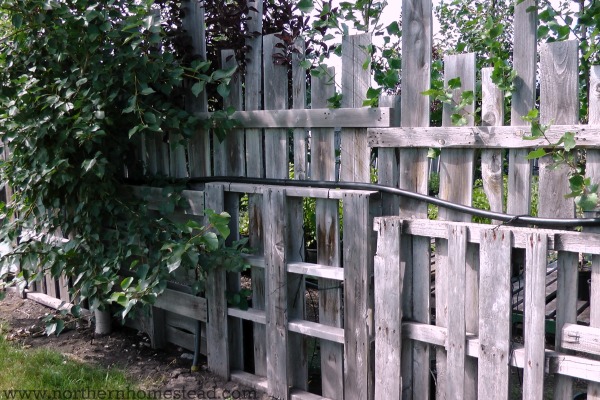
Microclimates make a big difference in a cold climate. A south-facing slope will always be a bit warmer than a north slope. We share more about it in our blog article: Microclimates in a northern climate.
Microclimates can be created purposely to protect plants from cold. Using microclimates we can plant heat-loving plants in warmer areas and cool weather crops in more exposed cooler areas of our garden.
A windbreak can be planted or built with recycled windows, pallets, straw bales, or a fence. It helps young plants to get a better start and also provides a warmer microclimate during the whole growing season.
Raised beds are always a bit warmer, this is because cold falls and frost often flows like a river and might go around a raised bed. Raised beds have more sun exposure, which can make a big difference as well.
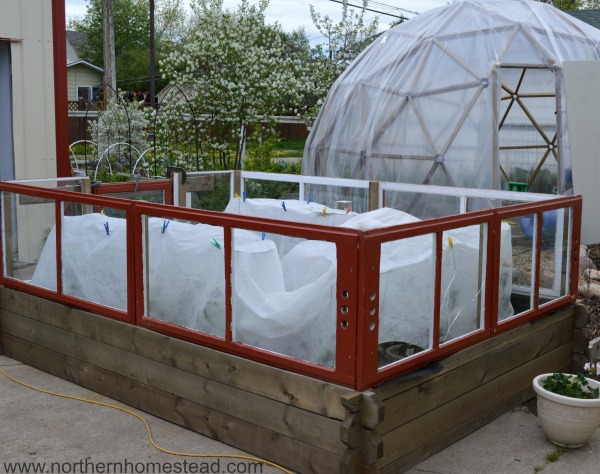
We combined the raised bed and wind barrier in a window-protected garden bed. With an additional blanked cover the heat-loving tomatoes can get to a better start during cool spring days. This way we are able to harvest ripe tomatoes even in our cool summer. Read more about growing tomatoes, and peppers in a cold climate.
Cover with a frost blanket
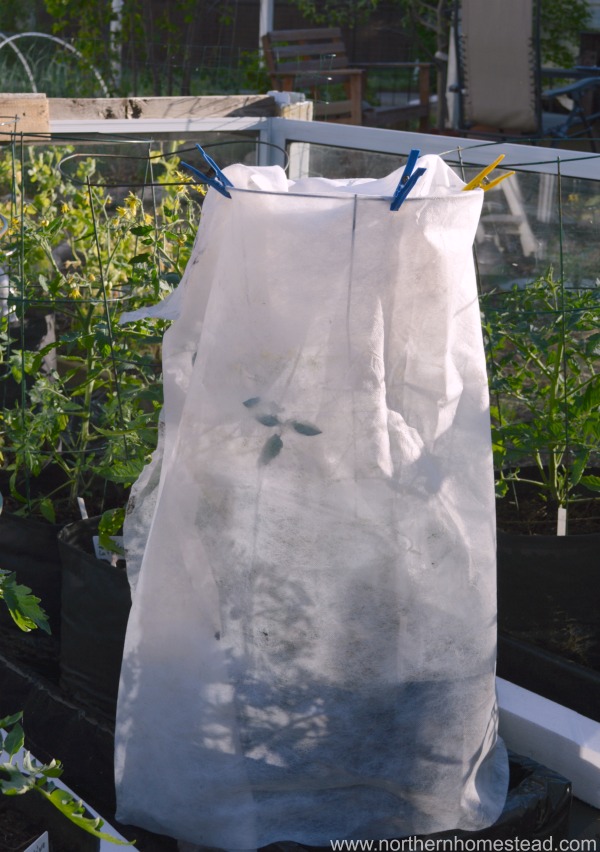
A frost blanket is our constant companion in the spring garden. We have several of them and use them all throughout the planting season. Some we have cut into smaller pieces, so we can wrap an individual plant.
The frost blanket is lightweight and provides shade as well as some frost protection. By using these blankets we can simplify the hardening off plants, and help young seedlings to establish themselves better.
Most of our cold-sensitive plants are covered all the time till the risk of frost is completely over. That’s the beauty of a frost blanket, that it can be left on all day.
A frost blanket can also be used in the greenhouse and cold frame to give additional protection.
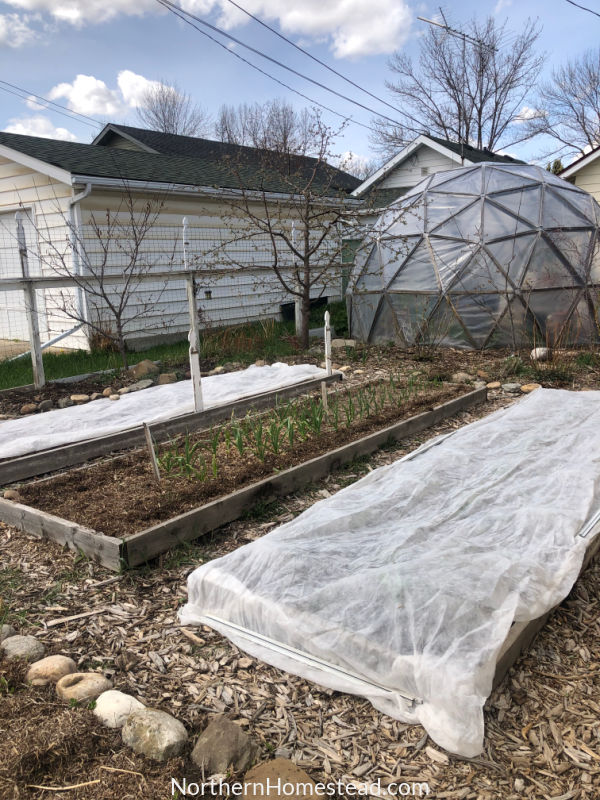
A frost blanket can also be used in combination with glass jars. When there is a drop in temperature, a blanket over the jars will double the protection. Also when removing the jears, use a blanket to give the plants some shade, read more below.
Use glass jars
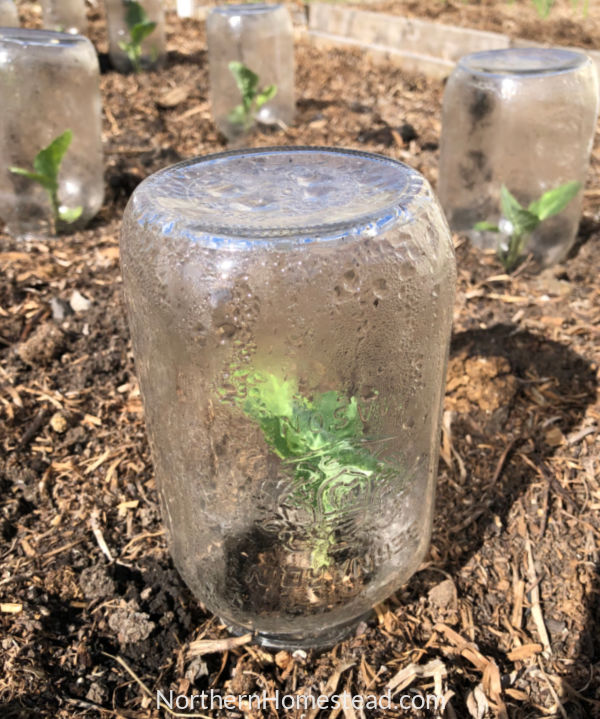
Jars or cloches are the simplest and most amazing ways to start plants in spring. They can be used for seedlings as well as seeds.
I find glass jars work best, plastic jugs can also be used but you will have to watch it more as not to overheat the plant. Glass jars, on the other hand, create a small microenvironment inside, condensation builds up and keeps the jar from overheating. They can be left on the plant all day during the cool springtime.
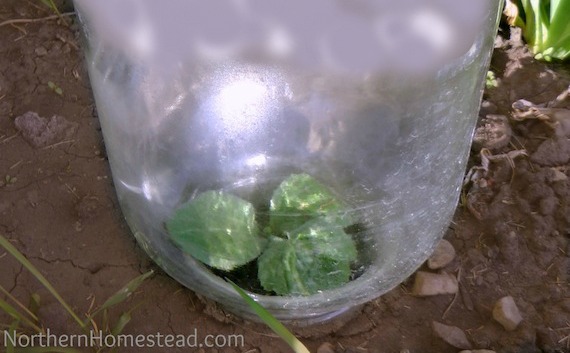
Choose the size of the jar according to the plant that you started. For squash, I like to use at least 2 quarts (or 2 liters), as for most other plants 1 quart is enough. Plant a seed, water it, and cover it with a glass jar. The jar will create a microclimate, keep moisture in, and also protect the seed and seedling from predators.
Our last frost day is at the end of May, on May 9th I planted a zucchini seed and placed a jar over it. May 28th the zucchini plant is growing nicely, see the picture above. This works very well!
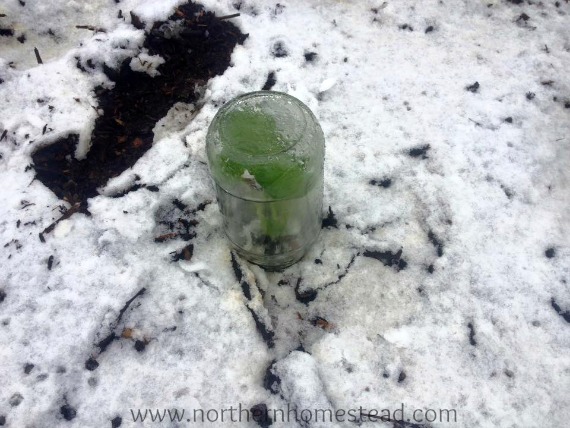
Glass jars are also great for protecting seedlings from sudden, wet, spring snow. Spring snow is not unusual in a cold climate. Seedlings that can break from the weight of the snow can be easily protected with a glass jar over them.
Removing the jars
Glass jars or cloches provide a very unique environment for the plant. There is no wind, the moisture blocks some of the sunlight, and the temperature stays more constant.
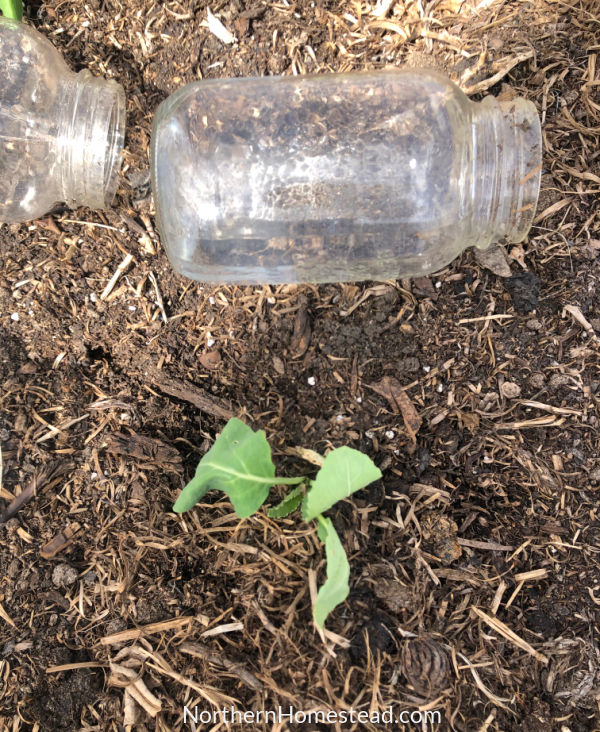
If the years have been covering the plant for several days (or weeks), the plants need to adjust slowly to the outside, aka harden off. A bright sunny day can lead to stress very quickly. If possible choose an overcast calm day to remove the covering. Or use a frost blanket to give some shade and protection, so the plants don’t have to adjust to everything at once.
Build a row tunnel
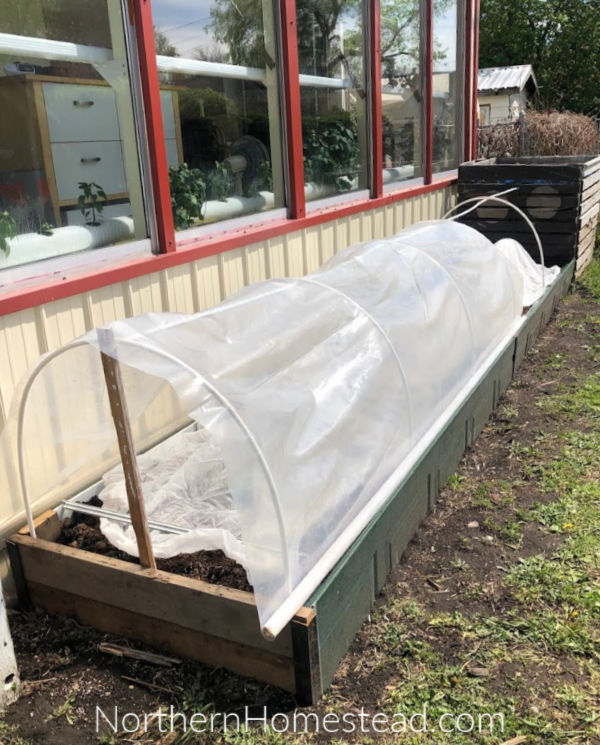
Row tunnels act like little greenhouses that protect a row or a raised garden bed. We cut 1/2” PEX pipe into 7-foot lengths, inserted a 1 1/2 foot long rebar on each end, and pushed them into the ground. If the ground is too hard, then the rebar can be hammered into the ground first, and then put the pipes unto them. Then we attached the plastic to boards and put it over the pipes.
Or you can also buy Fleece Tunnel Garden Cloches, easy to install and use.
When using plastic to cover a row tunnel, it is better to keep ends open for air circulation. Fleece or frost blankets can be wrapped around.
Build a greenhouse
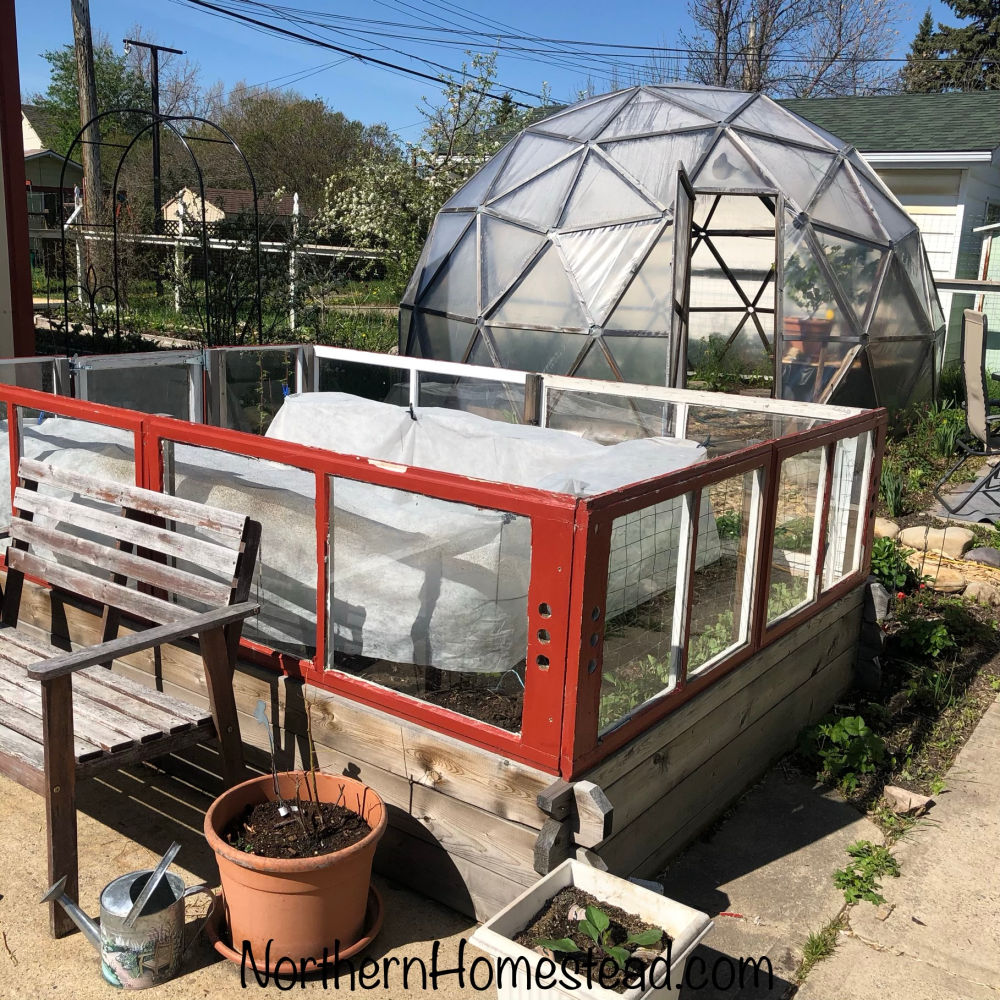
A greenhouse is almost a must-have in a cold climate. We share how we build our geodesic dome greenhouse in version 1 and version 2.
When we talk about a greenhouse, we don’t mean just one with shelves or tables for starting seeds in them. We cover a portion of our garden with a greenhouse. Read more about growing a greenhouse garden.
A greenhouse alone will not help much if the temperature drops regularly to below freezing. Greenhouse poly cover gives you about 2 degrees of protection at night. We installed a heat exchanger with a simple car radiator. It keeps the greenhouse significantly warmer at night and cooler during those bright and sunny spring days.
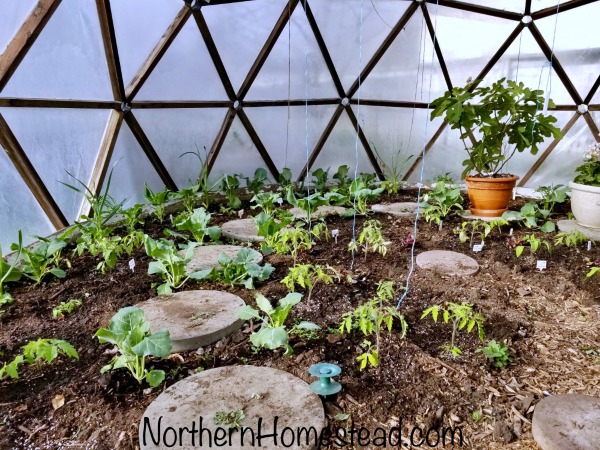
In early spring we plant cold weather crops in the greenhouse, like peas, lettuce, kohlrabi, etc. Later when the weather gets warmer we interplant with heat-loving plants like tomatoes, peppers, and eggplant. By the time the heat-loving plants will need all the space, the cold weather crop will be harvested.
What are your best tips for dealing with cold and frost in spring? Please share in a comment below.
We invite you to subscribe to Northern Homestead and follow us on Instagram, Facebook, or Pinterest for the latest updates.


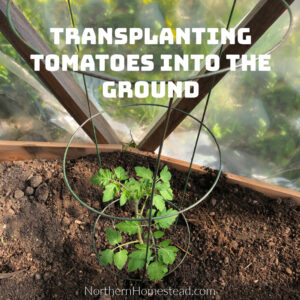
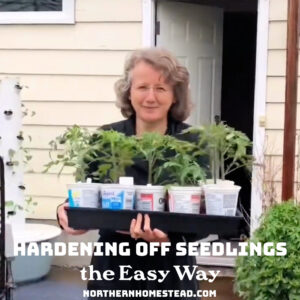
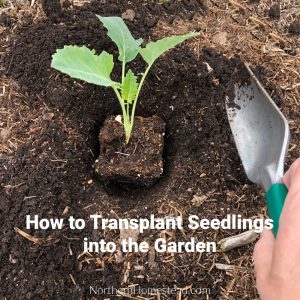
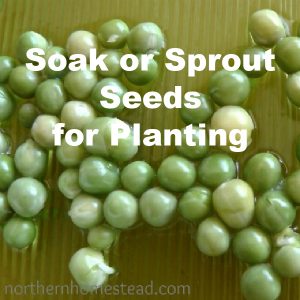
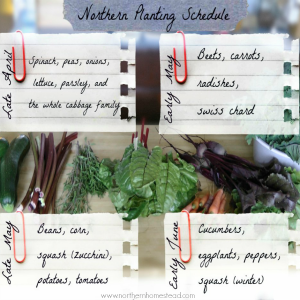
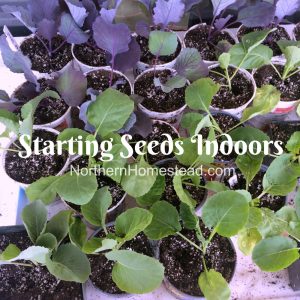
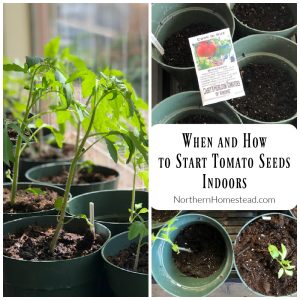
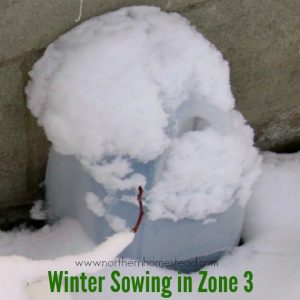
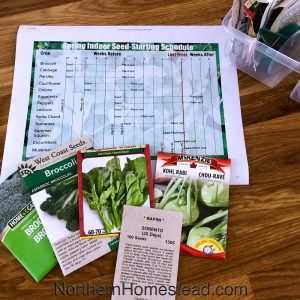
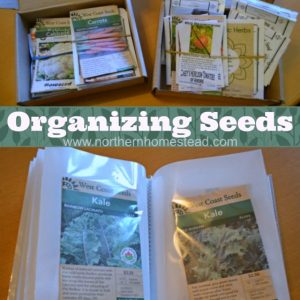

We LOVE your blogs, thank you for all the information!
We understand you are north of Calgary, please tell us which town. We are in Sylvan Lake, We are 75 year old seniors & are trying our hand at Tower Garden towers.
We ordered Albion day neutral, EVERBEARING bare root Strawberries that just ARE NOT growing Kratky style! They have been in sealers for over 2 weeks & just look dead, no new growth, no new roots!
Would you happen to know where we could get bare root strawberries in Alberta? Preferably Albion or Seascape.
We have been isolated for over a year, and do ALL our shopping online or curbside pickup.
We realize you are very busy, but would so much appreciate a response.
Warren & Linda Bailey
Thank you Linda for your kind words. To answer your questions I wrote you an email. Hope it helps.